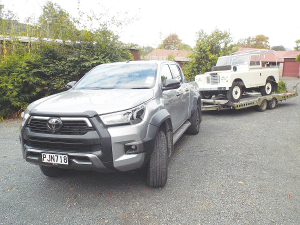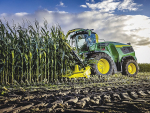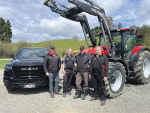The war for supremacy in the ute market is still being waged by market leaders Toyota and Ford, with the Hilux and Ranger.
Much has been written about the duo, largely by urban journalists, who seem fixated on “musthaves” like Apple Car Play, touchscreens or more cup holders. Along the way, those same journalists seem to have forgotten that utes are a work vehicle that – in the last decade – have evolved for work and play. Or, if you live in the Big Smoke, play and no work.
Rural News decided to use our test drive to put the latest Hilux in work mode. An Easter weekend dash through the centre of the North Island saw us taking in places like Te Kuiti, Taumaranui, Waiouru and Taihape. The aim of the jaunt was to collect a 1973 vintage vehicle that was once the epitome of rural transport – a Series 3 Land Rover.
So, let’s take a look at the new Hilux SR5 Cruiser Double Cab Wide Track Ute. First impression, from the front is a distinctly American look, with a high, broad bonnet line and wide wheel arch extensions.
It sits around 20mm higher than the previous model and has a 140mm wider wheel track than a standard Hilux. Up front there are wider A arms, longer stabiliser bars and repositioned shocks, complemented at the rear with a wider solid rear axle, a new stabiliser bar and wider placed dampers.
The layout is said to offer a 20% increase in roll rigidity and improved steering, both traits that we can certainly confirm. The Wide Track feels planted through the many curves and less than ideal road surfaces found through the King Country.
Steering feedback is informative and the vehicle is easily pointed and holds the desired line – even on poor surfaces.
The level of control is also tweaked quite dramatically with the addition of rear disc brakes, and 25mm larger diameter front units. Pulling a 6m, tandem-axle low loading trailer, with that Series 3 Land Rover aboard, momentum could always be easily controlled.
Sporting the 4-cylinder, 2.8 litre motor used throughout the range, with power at 150kw and 500Nm torque meant that towing was a leisurely affair. Typically, the rev counter sat around 1400rpm, with cruise control at 94km/h. The only noticeable negative was an engine that appeared a little noisy on start-off. But it became noticeably quieter as revs, temperature and speed increased.
The 6-speed transmission performed well. The ride is about what you’d expect from a 3500kg capacity tow vehicle. Unloaded leaf springs on the outward journey meant there was some rebound action when hitting any of the numerous big dips on the roads. However, once loaded and homeward bound, things settled to a much more comfortable ride.
You really must take a closer look at pricing, with the Hilux offered at a driveaway price of $63,390 versus the Wildtrak at $75,990. Maybe the Ford has a few more cup holders and a nicer touchscreen display but— if you’re after a workhorse – is it worth $12.5k more?










